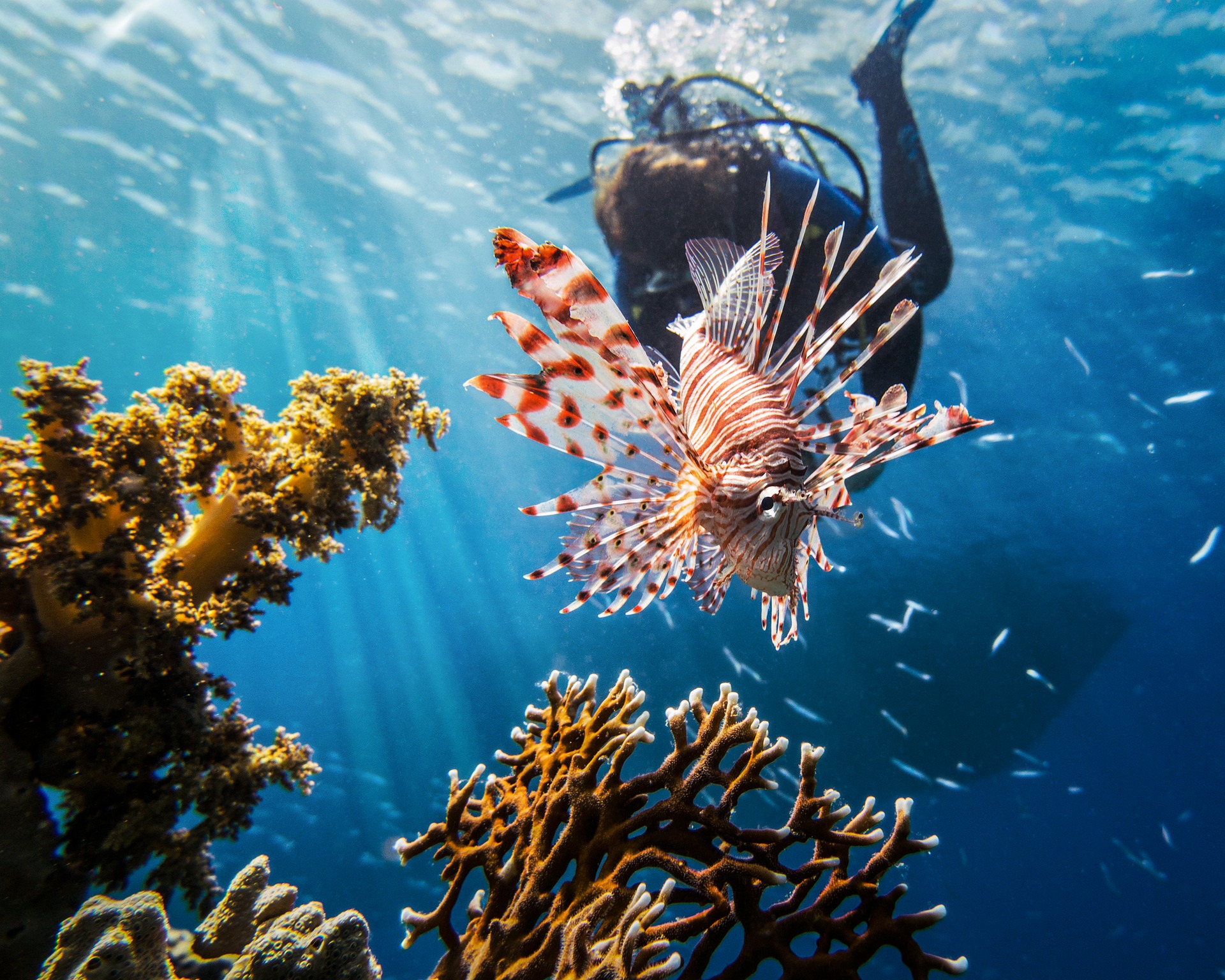Australia, particularly its Great Barrier Reef, must be one of the most famous and popular scuba diving destinations around.
This vast country has enough to keep even the keenest diver busy for a lifetime, but you might have heard some stories about it being particularly hazardous here.
We’re going to look in detail and see that Australian scuba diving isn’t more dangerous than that elsewhere.
Due to the enormous diversity of diving available, it’s correct that some locations will be more challenging and of higher risk than others, but we will see that as with diving anywhere, safety depends primarily on the actions of an individual.
Be sensible, know your limits, and you’ll see that Australia can offer you some of the very best scuba diving experiences in the world.
- What Are Dangers Specific to Australia for Divers?
- Is Scuba Diving the Great Barrier Reef Dangerous?
- What Are the Most Dangerous Animals on the Great Barrier Reef?
- Should I Be Worried About Sharks When Diving in Australia?
- How Do I Avoid Dangerous Jellyfish When Diving in Australia?
- What Are the Most Dangerous Diving Sites in Australia?
- 3 Safety Facts About Scuba Diving in Australia
- Conclusion
- You Might Also Like…
Disclosure: this post contains affiliate links (clearly marked with ), which means we may earn a commission if you buy something through them, at no additional cost to you.
What Are Dangers Specific to Australia for Divers?
As the world’s sixth-largest country, and the planet’s largest island, it’s fair to say that there’s an extensive range of scuba diving available in the waters surrounding Australia.
But if you have heard that it’s particularly dangerous to scuba dive in Australia, you could have some concerns before booking your trip of a lifetime.
We believe that Australia is no more dangerous a location to dive than elsewhere and that there aren’t any authentic dangers specific to scuba diving here.
Because much of the Australian diving industry is very well developed, managed, and regulated, it is reasonable to argue that diving in the main areas is actually safer than comparable international locations, particularly in other tropical countries.
Organizations such as the Australian Underwater Federation and the Australian Marine Parks work hard to manage the scuba industry and maintain high safety standards.
Risks that exist in diving are shared with those found elsewhere and are not specific to Australia.
Issues to consider carefully for visitors to a country with such colossal diving variety include the following:
Huge Diversity of Scuba Diving Conditions
When considering the massive range of diving available, from calm waters for beginners to advanced, expert-level locations, all potential divers must be aware of the environment and assess their own experience, fitness, health, and suitability for the dive.
This is a requirement when diving anywhere, not just in Australia.
Availability of Emergency Services in More Remote Locations
Australia offers the possibility of incredible diving in remote areas that may, as a consequence, have limited quick access to emergency services.
In other countries, even in popular tourist locations, the local services often leave a lot to be desired.
However, across Australia, emergency services are regarded as highly effective.
Potentially Higher Accident Rates in Popular Tourist Destinations
Accident records in popular areas can be affected by the large number of vacation divers that visit.
Unfortunately, it is the case that many accidents in tourist areas are related to the diver’s lack of fitness, experience, or a medical condition.
It’s the responsibility of all scuba divers to make sure as far as possible that they are qualified, sufficiently fit and have appropriate recent experience for the dives that they’ll do.
Is Scuba Diving the Great Barrier Reef Dangerous?
The Great Barrier Reef is rightfully one of the first places to come to people’s minds when thinking about tropical scuba diving and snorkeling.
Stretching along the Queensland coast of northeast Australia for more than 1,430 miles / 2,300 kilometers, the reef is listed as a UNESCO World Heritage Site.
Scuba diving here is incredible and can be challenging, but ultimately the risks are comparable to other similar locations worldwide.
It is fair to say that in most instances, your safety depends mainly on not putting yourself into situations unsuitable for your experience or condition and how you act while you’re scuba diving.
Much like in the rest of Australia and indeed the world, there are general dangers when scuba diving.
However, divers can avoid these by following their training, using common sense, and following local rules and information.
The scuba diving industry operating at the Great Barrier Reef is highly developed, professional, and well-regulated, meaning safety is the number one priority above all else.
Organizations such as the Great Barrier Reef Marine Park Authority and the Australian Underwater Federation constantly monitor activities, develop safe diving practices, and promote safety.
Applying sense and risk management is the responsibility of the individual diver and the tour operators and dive shops.
For example, a responsible diver who hasn’t dived for some time should take a refresher before heading out to the reef’s more advanced sites irrespective of what they might have done in the past.
Similarly, as some of the Great Barrier Reef sites are situated a long way from land and emergency services, even a highly qualified diver should consider doing more conservative diving to help keep themselves extra safe.
Ultimately, dangers that exist in scuba diving on the great barrier reef are common to diving elsewhere.
Almost all risks can be significantly reduced or avoided altogether by diving sensibly and staying well within the limits of your experience and condition.
What Are the Most Dangerous Animals on the Great Barrier Reef?
If you were to believe everything you’re told, it would be easy to think of Australia as a country filled to the brim with deadly, exotic wildlife just waiting to kill you.
While there are animals on land to be wary of, in general terms, unless you do something specific to provoke them, you’ll be safe.
Similarly, the Great Barrier Reef is home to some life that could be potentially dangerous to humans.
However, as usual, leave it alone, don’t provoke it, or break any of the rules about interaction to stay safe.
Scuba divers are very safe underwater, and the most common aquatic life injuries are usually self-inflicted, such as when someone accidentally comes into contact with stinging Fire Coral.
When visiting a new location, responsible scuba divers will make themselves aware of the primary treatments for potential marine life injuries to be prepared.
While remembering that we don’t have anything to be afraid of as well-behaved divers, some of the animals of interest found on the Great Barrier Reef include the following:
Blue-Ringed Octopus
With their yellow skins and blue-ring patterns, these small and relatively docile animals are among the most interesting and attractive of all octopus species.
Blue-ringed octopuses like to hide in crevices and use their color-changing skin to camouflage themselves against predators.
They feed on small crustaceans, like crabs, shrimps, and other small sea animals.
These beautiful creatures are, if provoked, one of the most venomous marine animals in the world.
When faced with danger, the octopus’s instinct is to try and escape.
But if they are cornered, their potent venom can be very dangerous to humans, and hospital treatment is required in all cases.
Cone Snails
Cone snails are a large group of sea snails capable of launching a venomous sting that can potentially be deadly to humans.
There are more than 3,200 different species of cone snail, making the ones that are particularly dangerous very hard to identify.
Needless to say, these snails do not hunt and attack humans.
So the rule of not touching is fundamental as you could be handling something that could kill you.
Lionfish and Stonefish
These fish species have venomous barbs and spines and must never be touched.
Injuries will only happen to a scuba diver through accidental contact or by them cornering the animal and it defending itself.
Stonefish can be found in shallow water, so divers and snorkelers should avoid touching the bottom, especially in water with poor visibility.
If there’s no choice but to walk on the bottom – for example, when entering and exiting for a beach dive – protective shoes should be worn, and careful attention should be paid to where you are walking.
Stingrays
Stingray barbs can cause severe puncture injuries, so divers should take care not to corner an animal, making it feel threatened, or swim too closely over the top of one.
Sea Snakes
Fourteen species of sea snake are found in the waters of the Great Barrier Reef, but they are usually very peaceful, and bites are not common.
Sea snake sightings by scuba divers are scarce.
However, if they are seen when diving, you should maintain a respectful distance.
Crocodiles
Crocodiles can be found on the Great Barrier Reef at beach and reef locations during certain times of the year.
Scuba divers should be aware of seasonal information, listen carefully to boat crew and dive guide instructions, and keep a safe distance from any crocodiles seen.
Sharks
The Great Barrier Reef is home to many shark species, and we will look at the risks they cause to scuba divers below.
Box Jellyfish
Box jellyfish are a seasonal problem in the waters of the Great Barrier Reef, and we’ll consider how scuba divers can avoid issues with them below.
Should I Be Worried About Sharks When Diving in Australia?
There are many shark species in Australia’s waters, and many scuba divers specifically visit in the hope of a sighting.
However, there is no real reason to be concerned. The total number of incidents involving sharks is very low compared to the enormous number of watersports participants in Australia each year.
Additionally, the percentage involving scuba divers is just 4% (in 2020) as opposed to, for example, surfing which has 61% of incidents.
Practically, there is no need to worry about sharks, and usually, when sighted and excited divers start paying attention, they will most likely quickly swim away.
Common shark species seen by scuba divers such as white and blacktip reef sharks, leopard sharks, or wobbegongs are not regarded as being at all dangerous unless you try to touch, feed, or otherwise mistreat them.
How Do I Avoid Dangerous Jellyfish When Diving in Australia?
Many Australian waters experience seasonal visits of various stinging animals.
The season is usually between November and May, but make sure you check the accurate local information when you visit.
During the “Stinger Season,” when small animals like Irukandji Jellyfish visit, scuba divers can protect themselves by following their dive shop’s recommendations and wearing at minimum full-body suits, often called stinger suits to prevent tingling or painful sensations.
The Box Jellyfish is large with a distinctive box shape and long slender tentacles that can deliver a vicious sting.
They are generally found close to shore, and nets are deployed to keep them away from swimming areas.
Scuba divers should pay particular attention when surfacing and descending to be aware of and avoid any jellyfish present.
What Are the Most Dangerous Diving Sites in Australia?
Australia is home to some of the most fantastic dive locations anywhere in the world.
Any dive site has the opportunity to be dangerous if correct safety procedures aren’t followed.
Still, there is one dive site that stands out with a reputation for being the most dangerous.
The Shaft Sinkhole in Mount Gambier, South Australia, is a cave diving site that has become notorious due to several unfortunate diver deaths there in the 1970s.
This vast cave system is entered via a narrow sinkhole shaft in the middle of a field.
Diving equipment has to be lowered through the shaft to access underwater caves and a network of passageways that descend as far as 120m deep.
To reduce the risk of accidents, access to the site is now carefully restricted to only suitably trained and experienced cave divers by the Cave Divers Association of Australia.
3 Safety Facts About Scuba Diving in Australia
1. Approximately 400,000 Australians enjoy scuba diving every year, with the most frequent participants spending about 90 hours underwater annually.
2. At least 300,000 international tourists scuba dive on Australian beaches and offshore reefs each year.
3. In an average year, four people drown due to scuba diving, which falls below the typical global range of fatalities and maintains the reputation of diving in Australia as a relatively low-risk activity.
Conclusion
Australia offers some of the world’s finest and most diverse scuba diving.
As with diving anywhere, it can be dangerous, particularly if safety rules and sensible practices are not followed.
It is reasonable to say that Australia has one of the most regulated diving industries globally, with rigorous health and safety rules.
Operators, especially in popular tourist areas, are highly professional with excellent safety records backed by a well-developed emergency infrastructure.
Visitors should enjoy diving in Australia in the knowledge that so long as they are sensible, it can be considered one of the safest scuba diving locations in the world.
You Might Also Like…
-

How Do Scuba Divers Drink Water? 5 Possible Ways (+7 Tips)
-

How Long Can Scuba Divers Stay Underwater? (+9 Limiting Factors)
-

Are Scuba Divers Athletes? All the Facts (+New Competitive Forms)
-

Are Sharks Scared of Scuba Divers? (What Every Diver Must Know)
-

Who Should Not Scuba Dive? 17 Reasons (Every Diver Should Know)
-
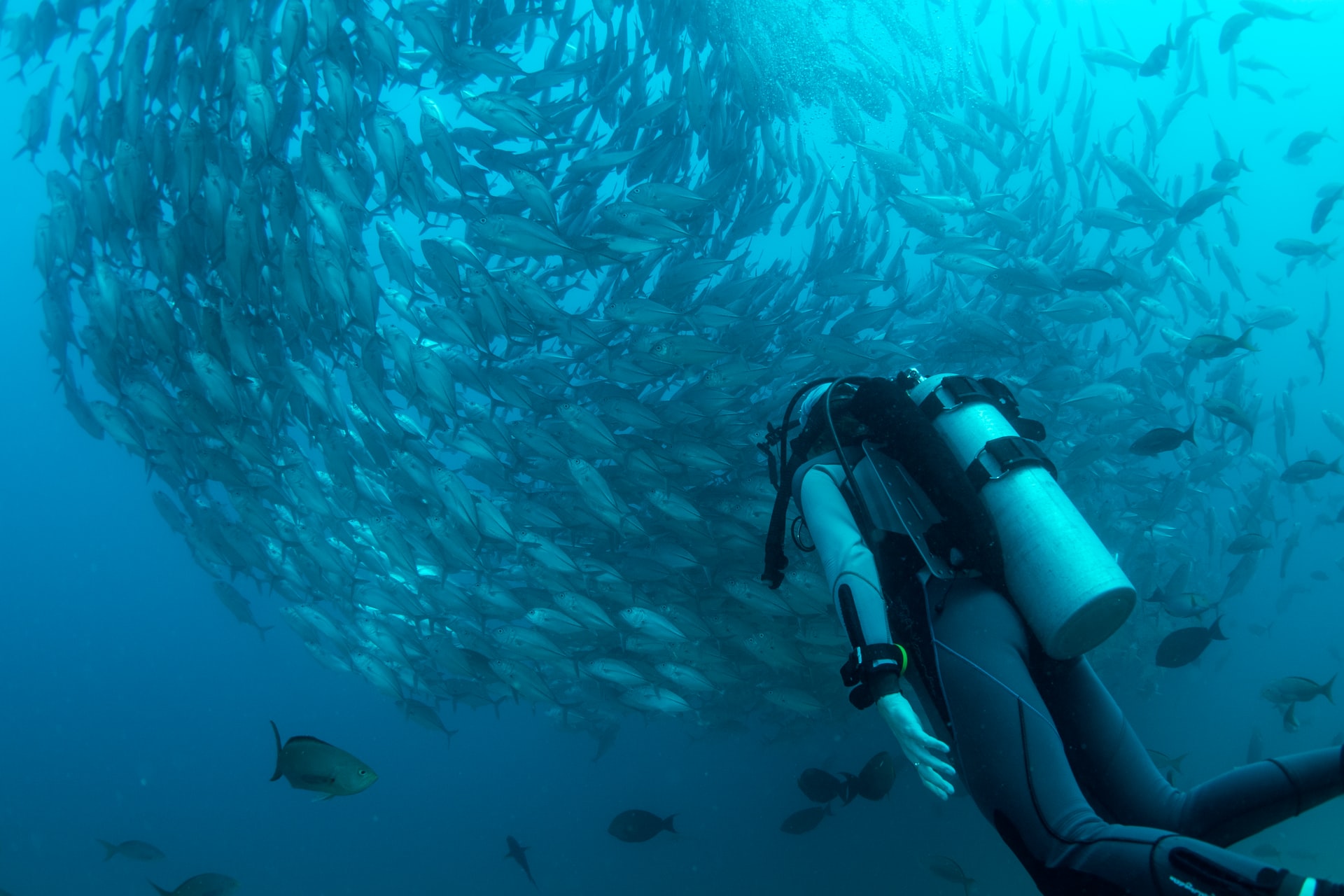
Should I Be Scared of Scuba Diving? 8 Common Fears (Debunked)
-

Why Do Scuba Divers Use More Air at Depth? (+4 Practical Tips)
-
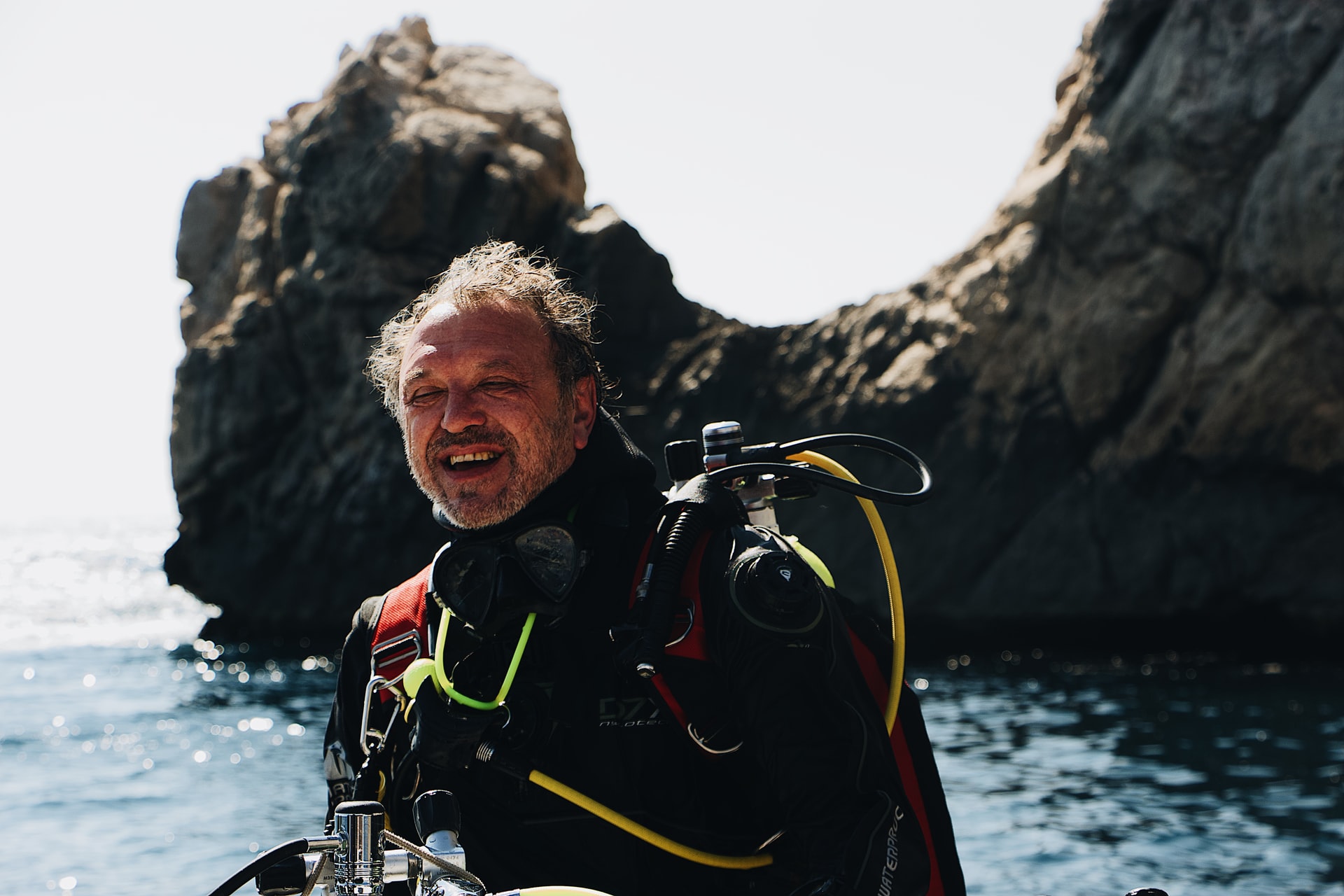
At What Age Should You Stop Scuba Diving? (+9 Tips for Older Divers)
-
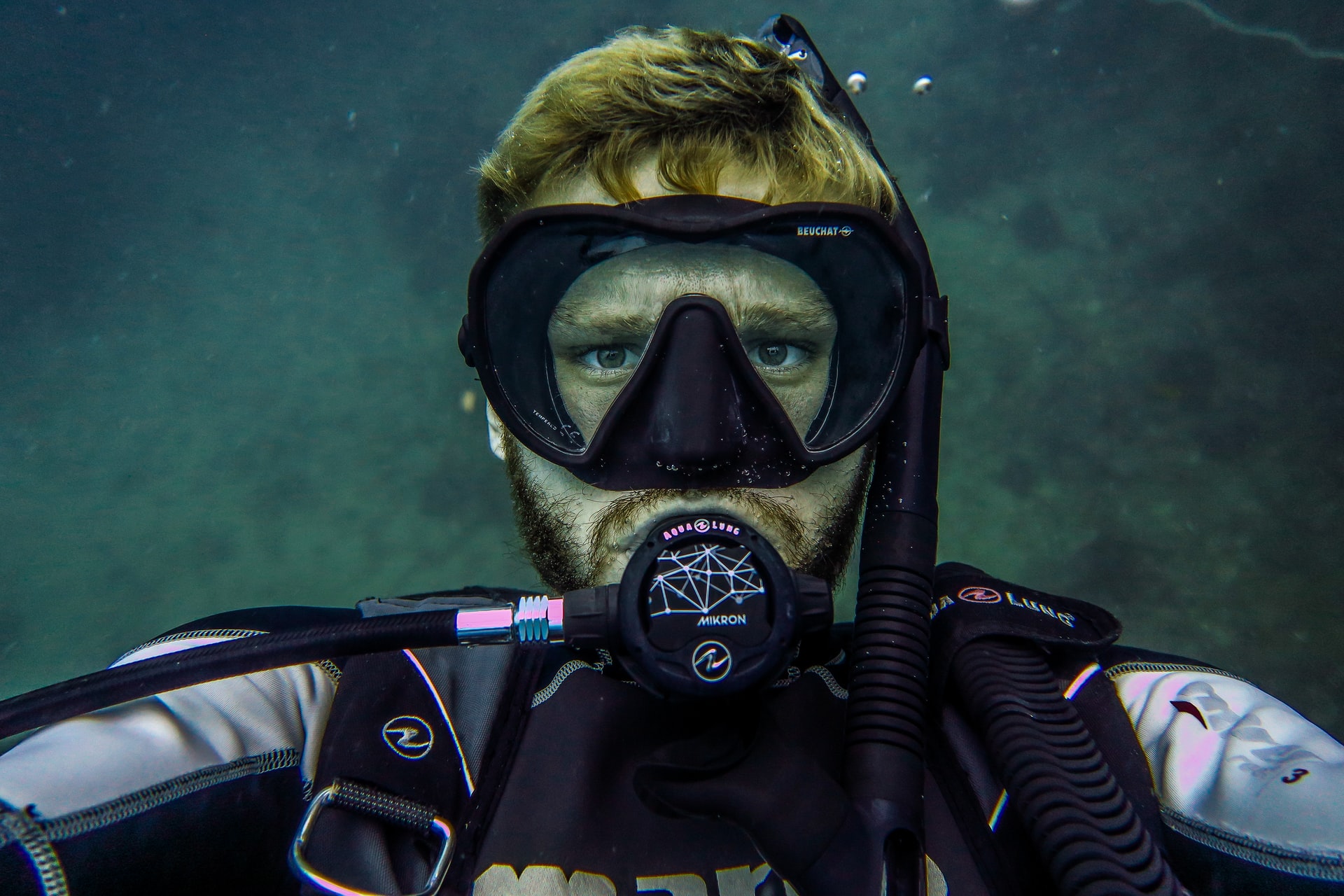
Should I Shave Before Scuba Diving? Crucial Facts (+9 Helpful Tips)
-

Why Do Scuba Divers Use Helium? (+Its Pros & Cons)
-
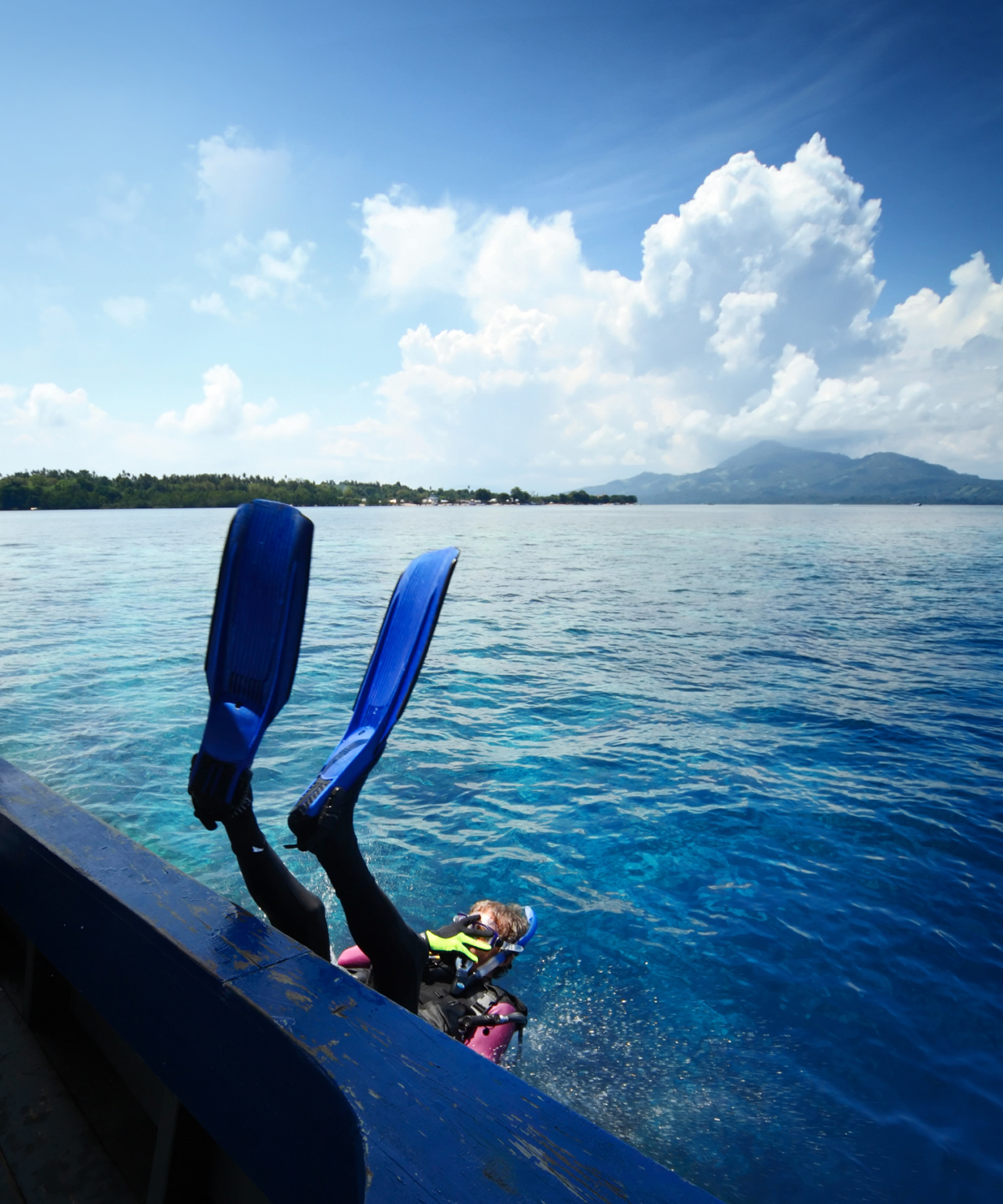
Why Do Scuba Divers Go in Backwards? (+3 Alternative Entries)
-

How Do Scuba Divers Sink and Float? (+Tips to Get It Right)

